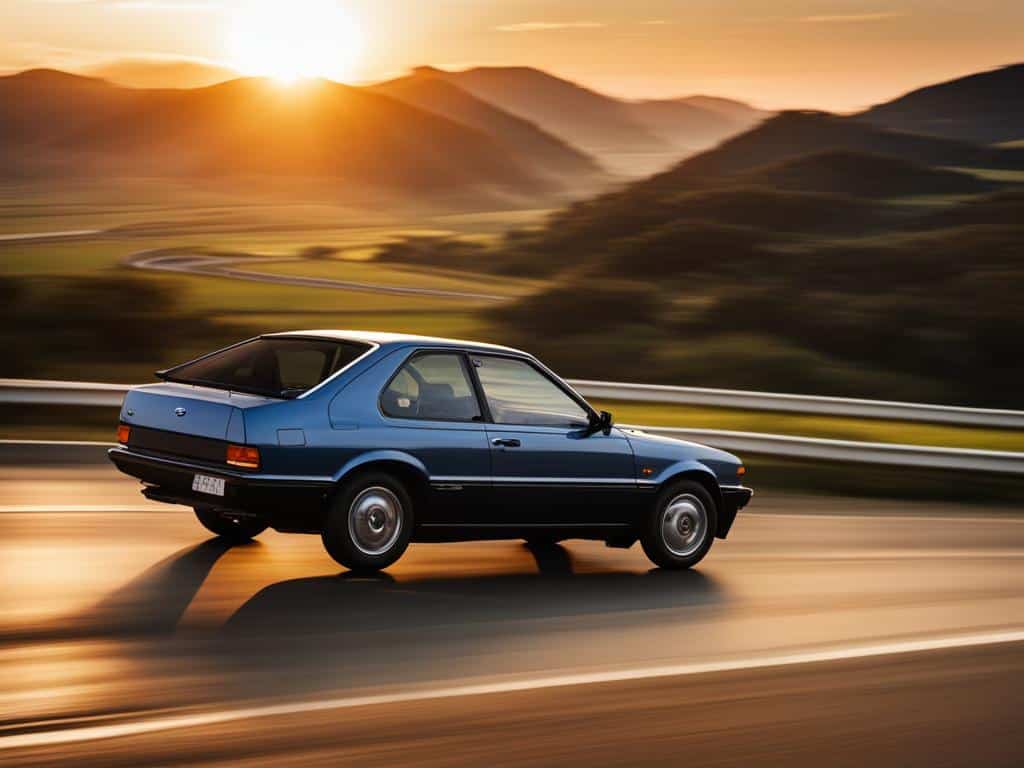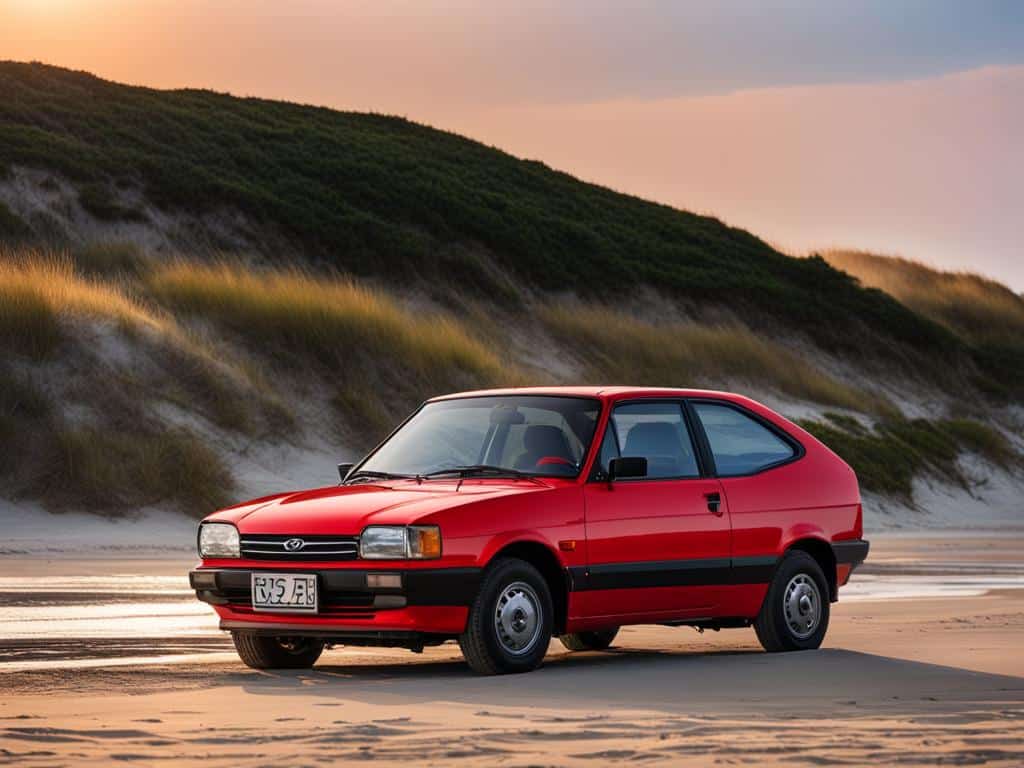The Hyundai Pony holds a special place in the hearts of car enthusiasts and collectors alike. As Hyundai’s first mass-produced and exported car, the Pony represents a pivotal moment in the company’s history and the start of its journey into the global automotive market. Today, we take a closer look at this classic Hyundai car model, exploring its specifications, features, history, and performance.
The Hyundai Pony, manufactured from 1975 to 1990, was not only South Korea’s first mass-produced car but also the vehicle that put Hyundai on the map internationally. Developed with the assistance of British car engineers, the Pony boasted a sleek hatchback body design styled by Italdesign Giugiaro, giving it a distinctive and timeless appearance. Over the years, the Pony underwent various iterations, including sedan, coupe utility, station wagon, and liftback models, offering versatility to suit different preferences and needs.
The first-generation Pony featured engines sourced from Mitsubishi, with options ranging from 1.2L to 1.6L. Its affordability and practicality made it a hit among buyers worldwide, with countries like Chile, Argentina, Colombia, Ecuador, and Egypt importing the Pony.
Despite some quality control issues, the Pony’s popularity continued to soar, laying the foundation for Hyundai’s future success in the automotive industry. The Pony also played a significant role in establishing Hyundai as a global player, ultimately paving the way for the brand’s evolution and growth.
Key Takeaways:
- The Hyundai Pony, South Korea’s first mass-produced car, marked Hyundai’s entry into the global automotive market.
- The Pony featured a hatchback body design, developed with the help of British car engineers and styled by Italdesign Giugiaro.
- It offered various engine options, including Mitsubishi-sourced 1.2L, 1.4L, and 1.6L engines.
- Despite some quality control issues, the Pony gained popularity due to its affordability and practicality.
- The success of the Pony laid the foundation for Hyundai’s future success in the automotive industry.
Hyundai Pony Specifications and Features
The Hyundai Pony, known for its affordability and practicality, came with various specifications and features that appealed to buyers. Let’s take a closer look at what this classic car had to offer.
Engine Options and Transmission
The first-generation Pony offered three engine options sourced from Mitsubishi: a 1.2L Mitsubishi 4G36 I4, a 1.4L Mitsubishi 4G33 I4, and a 1.6L Mitsubishi 4G32 I4. These engines provided reliable performance for both city driving and highway cruising. The Pony also came with transmission options, including a 4-speed manual and a 3-speed automatic, allowing drivers to choose their preferred driving experience.
Dimensions and Body Design
The Pony sedan had compact dimensions, with a length of 3,970mm, a width of 1,558mm, and a height of 1,360mm. Its hatchback body design offered practicality and versatility, making it easy to load and unload cargo. The Pony’s design was both functional and stylish, with a look that stood out on the roads.
Trim Levels and Features
The Hyundai Pony was available in various trim levels, catering to different customer preferences. These included the GLS, GL, Standard, GLX, and more. Depending on the trim level, the Pony offered standard and optional features such as power windows, air conditioning, and upgraded interior trim, enhancing comfort and convenience for both the driver and passengers.
With its range of engine options, compact dimensions, and a variety of trim levels, the Hyundai Pony provided buyers with choices to suit their needs and preferences. Its practical design and feature options made it a popular choice for those seeking reliable transportation at an affordable price.
Hyundai Pony History
The Hyundai Pony holds a significant place in the history of Hyundai, marking the company’s entry into the global automotive market. It was South Korea’s first mass-produced and exported car, solidifying Hyundai as a prominent player in the industry. Developed with the assistance of British car engineers, the Pony showcased Hyundai’s commitment to innovation and collaboration.
Upon its introduction, the Hyundai Pony featured a design that drew inspiration from popular models like the Ford Cortina and Morris Marina. However, it quickly established its own identity, becoming recognized for its distinct style and affordability. Despite some quality control issues, the Pony gained popularity among buyers and became one of the best-selling vehicles in Canada.
Over the years, the Hyundai Pony went through various updates and improvements. It played a pivotal role in laying the foundation for Hyundai’s future success, both domestically and internationally. As the automotive industry evolved, Hyundai continued to refine their vehicles, learning from the lessons and experiences gained during the Pony’s production.
The Hyundai Pony in Numbers
To understand the impact of the Hyundai Pony, let’s take a look at some key figures:
| Years of Production | 1975 – 1990 |
|---|---|
| Engine Options | 1.2L, 1.4L, and 1.6L Mitsubishi engines |
| Models | Sedan, coupe utility, station wagon,station wagonr liftback |
| Exported Countries | Chile, Argentina, Colombia, Ecuador, Egypt, and more |
These numbers reflect the widespread success and reach of the Hyundai Pony during its production years. It served as a testament to Hyundai’s determination to create affordable and reliable vehicles for a global market.
The Hyundai Pony played a crucial role in Hyundai’s journey, representing their commitment to innovation and their ability to overcome challenges. It will forever be remembered as a landmark car in the company’s history, paving the way for future accomplishments.
Hyundai Pony Performance
When it comes to performance, the Hyundai Pony may not be the fastest car on the road, but it certainly offers practicality and affordability for everyday use. The available engine options, including the 1.4L GLS model, provide a decent level of power and efficiency.
With a top speed of 92 mph, the Hyundai Pony can keep up with traffic on highways and urban roads. Its acceleration from 0 to 60 mph in 15.3 seconds might not be mind-blowing, but it is sufficient for daily commuting and city driving. The Pony’s lightweight construction contributes to its nimble handling and maneuverability.
While the focus of the Hyundai Pony is not on high-performance driving, it excels in practicality and fuel efficiency. The lightweight design and smaller engine options make it an economical choice for budget-conscious buyers. Its reliability and low maintenance costs further enhance its appeal.
Overall, the Hyundai Pony offers a balanced performance package that meets the needs of everyday driving. It may not set any records on the track, but it delivers on affordability, practicality, and reliability.

Table: Hyundai Pony Performance Specifications
| Engine Options | Acceleration (0-60 mph) | Top Speed | Fuel Efficiency |
|---|---|---|---|
| 1.2L Mitsubishi 4G36 I4 | N/A | N/A | N/A |
| 1.4L Mitsubishi 4G33 I4 | 15.3 seconds | 92 mph | Fuel efficient |
| 1.6L Mitsubishi 4G32 I4 | N/A | N/A | N/A |
Conclusion
The Hyundai Pony has left a lasting impact on Hyundai and the automotive industry. It was a milestone car that paved the way for Hyundai’s growth and success. Despite facing quality control issues, the Pony gained popularity for its affordability and practicality.
Today, the Hyundai Pony has become a classic car, sought after by collectors and enthusiasts. If you’re in the market for a Hyundai Pony, you can find various models available for sale in the used car market. Prices may vary depending on the condition and year of the Pony, so it’s essential to do thorough research before making a purchase.
Embracing the Pony’s legacy means embracing Hyundai’s journey and evolution in the automotive industry. The Pony symbolizes the brand’s determination to enter the global market and establish itself as a key player. It holds a special place in Hyundai’s history and serves as a reminder of their commitment to delivering reliable and affordable vehicles.
FAQ
What years was the Hyundai Pony produced?
The Hyundai Pony was produced from 1975 to 1990.
What was the first body style of the Hyundai Pony?
The Hyundai Pony was initially presented as a coupe concept car and later introduced as a four-door sedan.
What engine options were available for the first-generation Pony?
The first-generation Pony had three engine options: a 1.2L, 1.4L, and 1.6L, all sourced from Mitsubishi.
Where was the Hyundai Pony exported to?
The Hyundai Pony was exported to various countries, including Chile, Argentina, Colombia, Ecuador, and Egypt.
How was the second-generation Pony different from the first-generation?
The second-generation Pony was extensively restyled and offered as a five-door liftback and a two-door pickup.
Was the Hyundai Pony considered a reliable car?
The Hyundai Pony faced some quality control issues but gained popularity due to its affordability and practicality.
Is the Hyundai Pony still available for sale?
Yes, some models of the Hyundai Pony can still be found in the used car market. Prices vary depending on the condition and year of the Pony.




